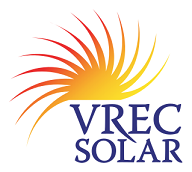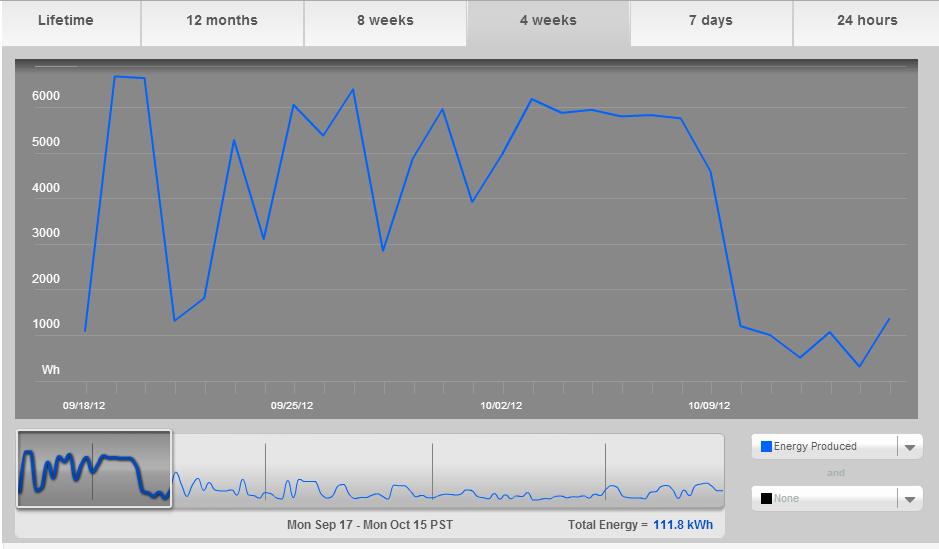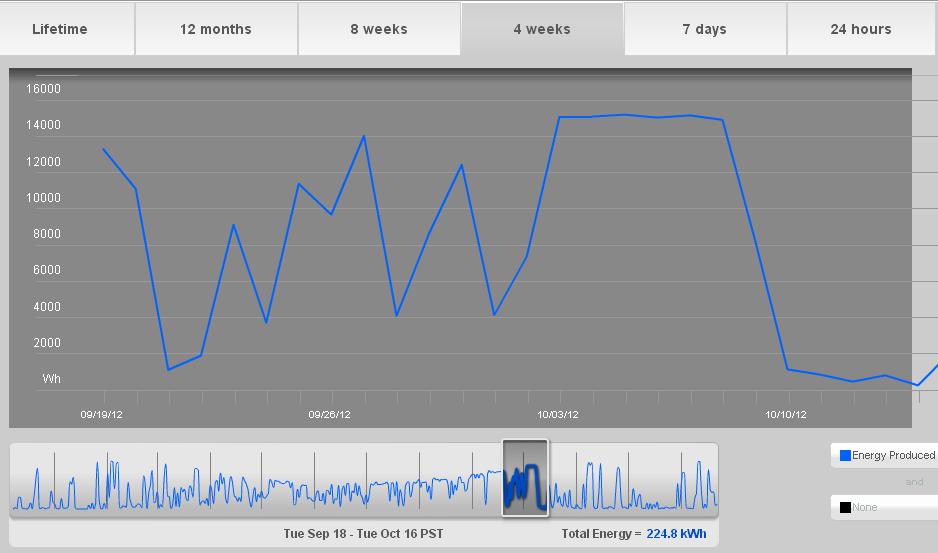Designing Solar Energy Systems for Performance
Posted by karen in Front, News, Our News, on January 30, 2013Given the relative cost of solar energy and the resources needed to produce solar equipment, we believe that systems should be designed to optimize production. There are many factors that can contribute to a system preforming optimally and proper design is crucial. Unfortunately architects, builders and even solar installers do not always understand these design criteria.
The graph on the right shows four weeks of energy production from a 1.8 kW solar photovoltaic system we designed and installed here in Vancouver (click the image twice to view energy details). Data from this installation can be viewed online.
This second graph is for a 4.6 kW system installed at Science World in Vancouver. Data from this system can also be viewed online. Notice that during the same four week period it produced 48.9 kWh / nominal kW installed. The first system produced 62.1 kWh / nominal kW.
Both system use the same model of solar panel (Day4 Energy 60MC-I) and the same make of inverter.
Why is the second system less productive? It is mainly the layout of the array that prevents it from achieving higher production values. The array could have been designed to produce more energy.
It is not always possible to design for maximum production. But we always attempt to design our systems to produce optimal energy levels given the constraints of the site. If you want to maximize the return from your photovoltaic system it is important that the system installers understand these design elements.





